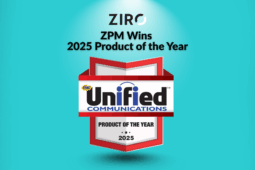One of the pain-points most contact centers experience is abandon rates – callers who simply get tired of waiting for an available agent to service their call, and disconnect. The result is that the customer is dissatisfied with the experience, and the contact center experiences an abandoned call – calls that drop from the queue. The caller’s intention was never satisfied, and the caller may, or may never call back.
Contact centers build their workforce staffing around their peak periods – but bursts of traffic can still happen at any time. This can lead to severe customer dissatisfaction, because they are forced to wait in queue for an interminable amount of time, and may not even have their needs met by the time their patience is exhausted. In these cases, no one wins – not the business, and not the customer.
There are many strategies that can be used to reduce abandonment rates and retain customer satisfaction – self-service/automation, queue prioritization, customer-specific queue experiences (e.g., allowing callers to select their preferred hold music), and so on. However, there is no better way to achieve optimal queue performance and caller buy-in than to offer callers the ability to leave a voicemail or callback in the queue.
The way that voicemail/callback in queue works; is after a certain threshold is reached (e.g., actual or expected wait time, a percentage of occupied agents, and so on) callers can elect to remain in the line, and have the next available contact center agent call them back.
This can be implemented very strategically, to optimize the use of resources. A caller in the queue is seizing telephony ports, licenses, and system resources to stay in queue, waiting for agents, who are servicing other patient callers. Every contact center is unique, in terms of their wait times, loads, and needs of callers to deal with particularly skilled agents – and patience levels.
Some callers simply have more patience and tolerance for wait times than others – or needs. Some may have tasks that are more pressing – which can result in abandoned calls. Giving callers a sense of control (via menu options, such as voicemail breakout or callback in the queue), while satisfying their need to deal with a live agent can be a significant improvement to their queueing experience and simultaneously improving a contact center’s statistics for retention. There are a variety of ways to implement this solution, as per any business needs.
For example, a support hotline for customers seeking information about the installation of a piece of hardware. Callers dial into a toll-free number, which generates a cost to business. The agents assigned to that queue are occupied with other live calls, and the expected wait time is over 5 minutes. Callers are alerted to the unusually high wait time. With callback-in-queue, they have the ability to leave the queue until there is a lower volume, and agents can assist them, at a time more convenient to the caller and agent. The caller hears a menu option, which allows them to leave the queue, and either keep their priority – or, based on business needs, wait for a time when agents are less busy with more urgent live calls. The caller is free to do as they wish during the callback wait time and is not seizing telephony and system resources which are available for more patient or pressing requests.
Once the live calls are done, or once the callback-in-queue priority is triggered, an agent is presented with the callback-in-queue request, just as though it was another call in a queue, and they can listen to any voicemail/message the caller left originally, and trigger an automatic callback. The contact center reporting reflects all the queue behavior and agent performance, and KPIs are significantly improved.
Further redundancy and automation are incorporated with the callback in the queue – this can include email notification of events (voicemail in the queue was left, distributed to a team), the callback was answered, the callback was aborted, or any other variation. Callbacks can be assigned prioritization (such as the back of the line, the front of the line, or incrementally prioritized over time), or even scheduled by caller’s availability.
In this sense, callbacks or voicemails in the queue are available to be added to virtually any contact center – this is not a native functionality. However, Stack8 has a series of customizable contact center modules that can provide this functionality. Any contact center experiencing extended wait durations, either during peak times or spiked traffic can avail themselves of this functionality, which will drastically reduce call abandonment and improve both caller satisfaction and use of all telephony and human resources involved in call treatment.
Ready to take your unified communications from headache to hassle-free?
No throwing darts at proposals or contracts. No battling through the back-end. No nonsense, no run-around.



